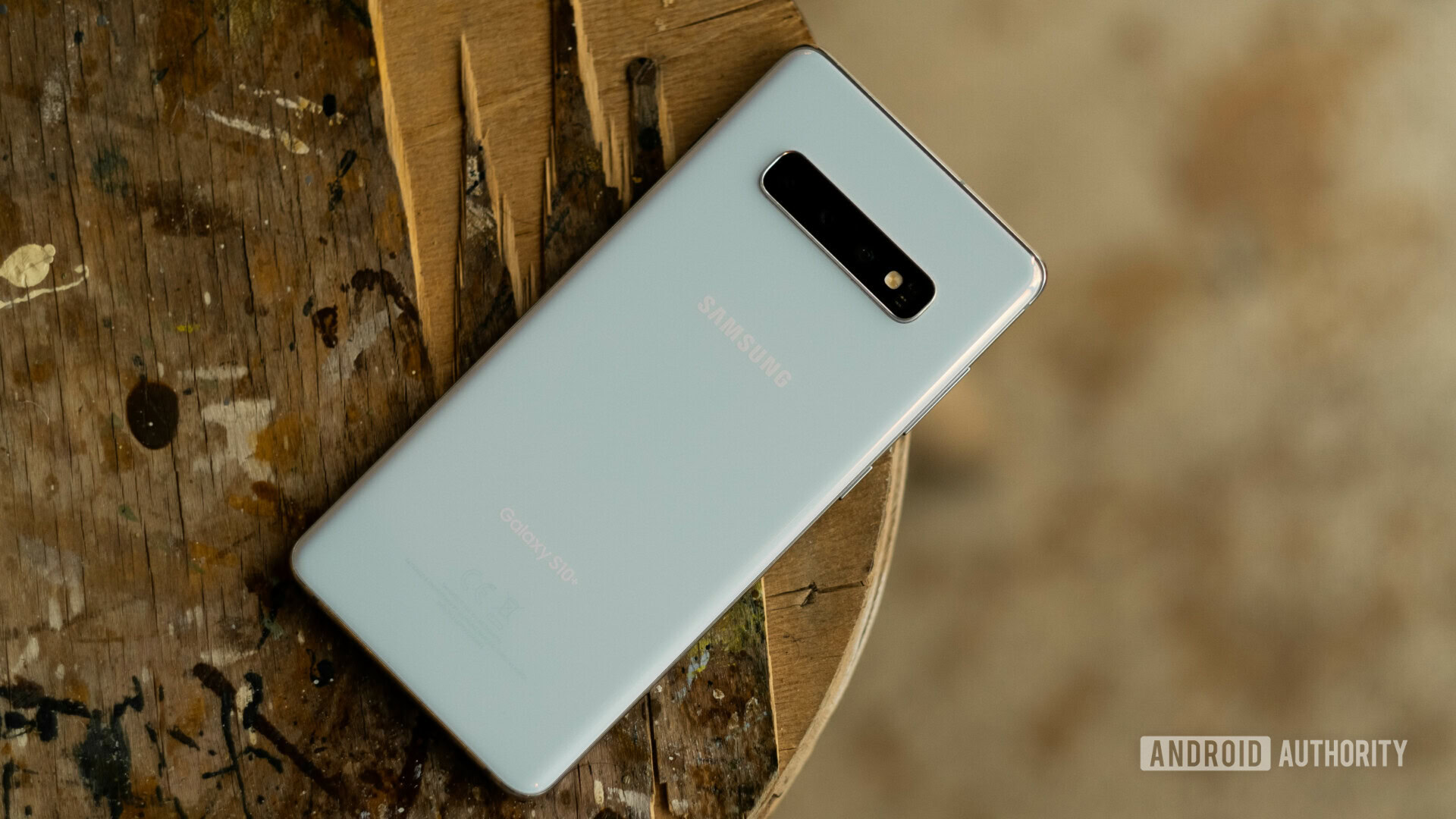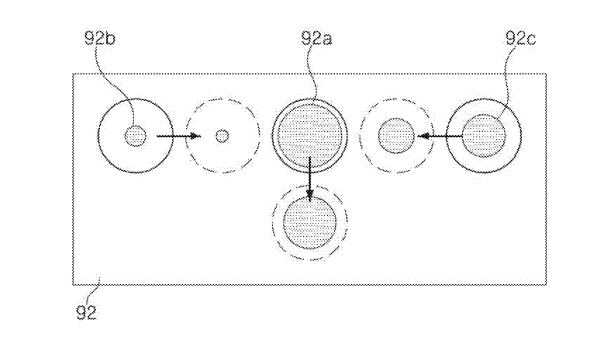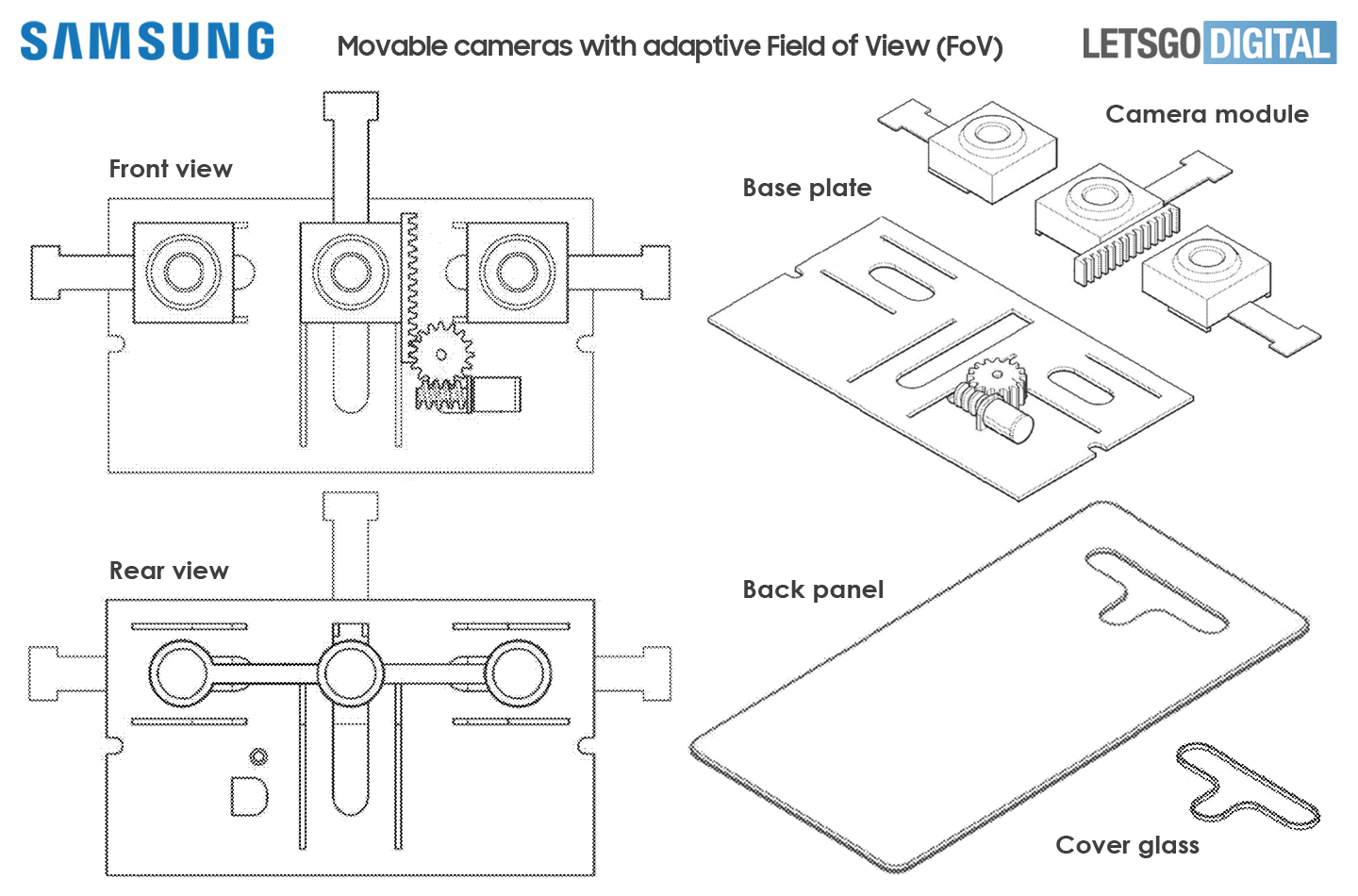Affiliate links on Android Authority may earn us a commission. Learn more.
Samsung patents a movable camera system with adaptive aperture

- A new patent suggests that Samsung is working on a movable camera design for smartphones.
- The movable camera system would enable multiple aperture values.
- It’s unclear if Samsung would ever use this system on a consumer-ready smartphone.
Samsung is apparently working on a new movable camera design for smartphones that may enable variable aperture.
The design came to light in a recently published patent (h/t LetsGoDigital). The camera array, in its standard setup, sits horizontally across a smartphone’s back. However, the cameras in this array can also move, forming a triangle. The primary camera resides in the middle and can move downwards from its original position. At the same time, an ultra-wide camera and a telephoto camera reside on the left and right sides of the array and can move inwards.
Each camera sensor has two openings, and each of these openings has a different aperture. So, in theory, changing the position of the sensors changes the aperture of the cameras. When the cameras are in their triangular formation, each would be set on their lowest aperture. As the cameras have two final locations, this suggests that only two aperture values per camera would be available. The figure above adds a bit of context to this system.
Samsung’s movable camera system: The drawbacks
There are plenty of benefits to this movable camera system. Larger apertures (represented by lower f-numbers) allow more light into the camera, which should improve low-light photography.
See also: Understanding aperture — What is it and how does it affect image quality?
There is a fair share of drawbacks, too. Moving parts introduce more possible failure points. It’s especially frightening, considering these parts would be tied to the phone’s delicate camera components. The hardware needed to actuate the camera system would likely make the phone heavier, too.
Samsung Electro-Mechanics division is responsible for the patent, filing it back in October 2020. That said, it remains unclear if Samsung is considering using this system in a future phone. The company has experimented with variable aperture phones in the past, including the Galaxy Note 9 and Galaxy S10 Plus. It’s also no stranger to moving cameras. The Galaxy A80 packed a nifty flippy camera system.
This is merely a patent, though, and doesn’t confirm that Samsung is planning such a system for a future consumer-ready smartphone. Nevertheless, what do you think of the design? Let us know in the comments below.

